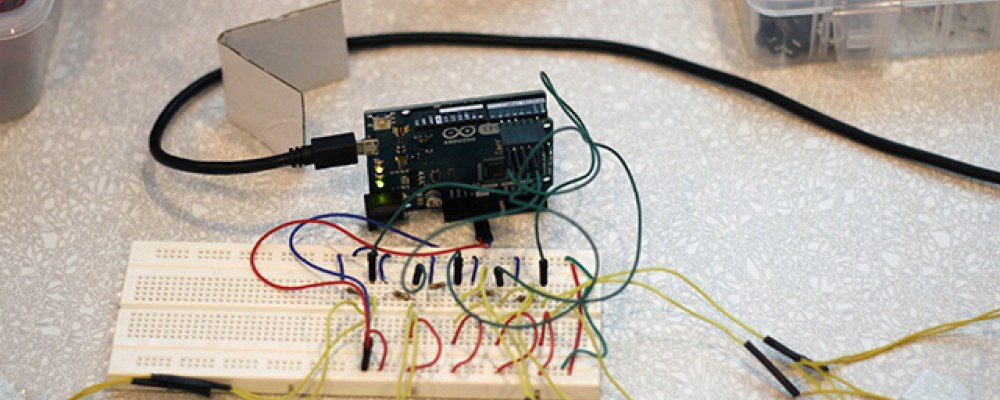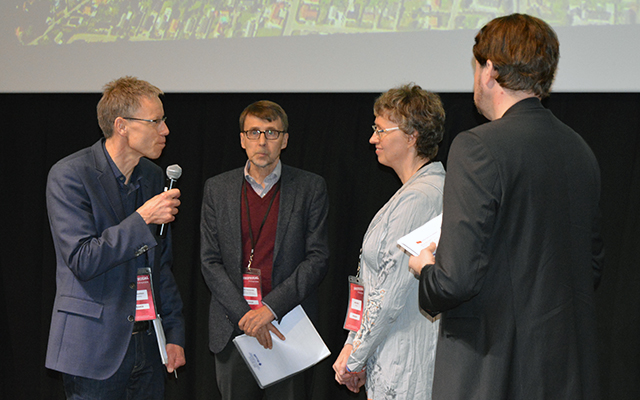
DIY-thinking creates new business
Emerging markets create new kinds of business opportunities for anyone who wants to innovate with a new mindset.
Being creative with fewer resources shouldn't be something new to Finns. When Nokia was developing one of its cheapest and most basic phone models, some Nokia employees went to live in slums in Mombay and Sao Paolo. That was in the late 1990s when mobile phones were still pretty expensive.
– Mobile phones were prized possessions. People were covering their phones with plastic to protect them from dust and rain. They noticed that people were using the light from the phone to find their way in the dark, said Professor Jaideep Prabhu from Cambridge, who was speaking at the Innofrugal event on Monday.
Prabhu, speaking to the auditorium of Heureka, said that Nokia employees took those lessons back to the company and Nokia went on to design a mobile phone that was durable and easy to use and had a dustproof keypad and built-in flashlight. That model become a huge success.
– It was because Nokia took those markets seriously.
The story of the Nokia 1100 is an iconic one about frugal innovation—a term that briefly describes innovating fully functional basic versions of products and services with as few resources as possible.
Market potential is huge
Frugal innovation is gaining more popularity for a number of reasons. The biggest reason is emerging markets. Those markets need a different kind of approach.
People in rural communities or urban slums can't buy the finest technologies and big industrial solutions. People need simple, durable solutions to everyday problems. And simple means that it has to be dirt cheap so that people can buy it.
This means that the company's cut from product sales is small. Companies that really want to tap into emerging markets need to turn their thinking from servicing high-end customers with high-quality product to servicing masses of people with really basic innovation. Instead of selling 10,000 products with a cut of 50 dollars per unit, frugal innovation, when done right, means that a company sells a product for a profit of one dollar per unit to 100 million users.
Frugal innovation is pretty much do-it-yourself thinking done on the large scale. In many cases it's about creating something new with existing products.
For example, Siemens have created an alternative to an expensive ultrasound monitor. With just a normal microphone and a smartphone, nurses in rural areas can check a baby's heart rate.
Frugal innovators need to ask new questions. The most important questions are: What is the most basic product needed? How can it be done as cheaply as possible?
Emeritus professor Antti Hautamäki pointed out that with frugal innovation the whole concept of quality needs to be rethought. For some markets, quality means cheap, durable products that are easy to use and repair.
Get to know the markets
For communities with scarce resources the problems are different than those in the Western world. That means that companies wanting to tap into these markets really need to understand the conditions.
That isn't restricted to the product itself. It may also mean changing the business model.
Prabhu explained how entrepreneur Harish Hande wanted to bring solar electricity to slums and rural communities in India.
– The first thing he realised was that people couldn't afford the upfront cost of the panels. Hande has said that the best lesson he has learned in life came from a fruit cart vendor. The fruit cart vendor said that 300 rupees at once is too much, but 10 rupees a day is not.
Hande realised that people live day by day. His solution was to find partners, train them to operate solar panels to charge batteries and then rent those batteries to customers.
That model benefitted not only the customers who got energy but also the local partner who became an entrepreneur.
Hande probably didn't even realise that his model is one of the biggest trends now emerging. It is called “product as a service”. The idea is that products are in full use when people don't buy the products but rent them instead. Basically, people buy performance instead of products.
– Then there is an incentive to develop sustainable, durable and energy efficient products, said Kari Herlevi, who is senior lead of circular economy at Finnish public fund Sitra.
Most frugal innovation is not motivated by profit but the idea of making people's lives better. So a lot of companies talk about responsibility in a different kind of way.
These social enterprises are trying to work out solutions that are good for societies and also the environment also. This means that often companies are trying to address the issues of recycling or upcycling and the social effects of their product.

One good way to innovate frugally is by collaborating with different stakeholders. Peter Hesseldahl interviewed Heli Antila, CTO of Fortum, what kind of collaboration Fortum is doing. Emeritus professor Antti Hautamäki (second from left) and lead senior of circular economy in Sitra Kari Herlevi were talking about what public sector can do to spark innovations.
Finland has all the know-how
Innofrugal was a two-day event that tried to raise awareness among Finnish companies to think differently and find new markets. It became clear that lot of the solutions needed in emerging markets are within the field of cleantech, health technology and education. All of these are areas in which Finland has world class know-how.
Frugal innovation was many times declared as representing a change in mindset. To think simple and resource saving solutions instead of industrial solutions.
The Nordic Frugal Innovation Society's founder Venkata Gandikota reminded people that this kind of thinking is welcome also in the developed world.
– People are becoming more value conscious and values conscious.
Companies that can use resources more efficiently and responsibly and make cheaper products will be the true winners.